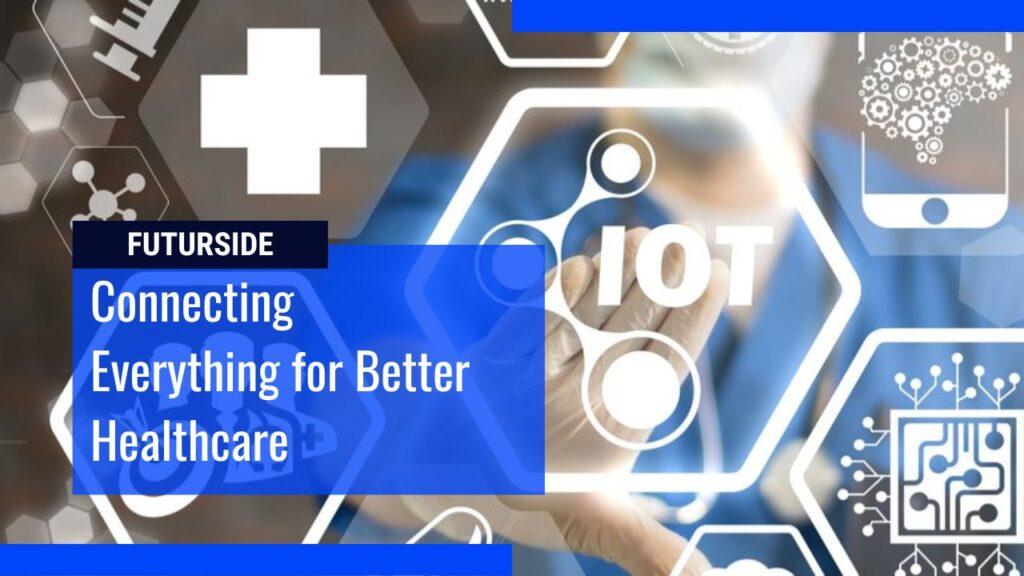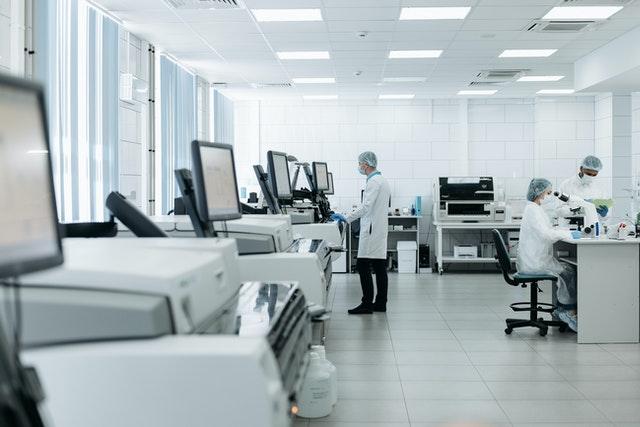In today’s world, technology is the name of the game, resulting in maximum comfort and a sophisticated way of life. We are surrounded by an army of devices that generate an epitome of real-time data. These devices form the internet of things ecosystem that makes our life efficient and easier.
However, our easy life also comes at the cost of our health and well-being. We are bombarded by an army of risk factors associated with this modern and sedentary lifestyle like unhealthy diet, bad air quality, pollution, lack of physical activity and exposure to chemicals in food and products.
That’s why many people end up having non-communicable diseases (NCD) like diabetes, hypertension, cardiovascular, etc… Not to mention that obesity is on the rise. What’s even worst is that these diseases progress in our body and we will rarely notice it. Its obvious manifestation mostly happens at an advanced stage and sometimes beyond remedies.
Yet technology is hitting another milestone where hospitals are gearing up innovation and technology together with data integration that results in timely, efficient and effective healthcare. These innovations provide long-term prevention and monitoring. We are entering the next chapter of healthcare, thanks to the Internet of Medical Things (IoMT).
IoMT allows pieces of equipment, software, data, ambulance and hospitals to connect to each other as a whole. It allows you to keep an eye on your current state of health in real-time 24/7, relying on personal health monitoring equipment provided by hospitals. With this state-of-the-art system, your current health input will be processed on a medical dashboard.
Your medical data go through further monitoring analysis by practitioners coupled with medical health review and personalized health insight guidances. Information is recorded and can be promptly accessed via the cloud anytime and anywhere. And edge computing provides additional resources for in-house data processing.
When there are results beyond the normal range, patients get an alert right away for further follow-up and treatment. Hence, we are heading toward a world where we can teach cars to speak and traffic to communicate. Where in case of an emergency, cars can call an ambulance faster than a human. In a world where devices can automatically deliver important life-saving data.
Devices can gather critical information before you arrived at the hospital. A patient could be examined before even entering the emergency room, saving precious time for the patient, doctor and family. It’s all part of a concept that has been working for several years. So what exactly is the internet of medical things?

Contents
What is the Internet of Medical Things?
The Internet of Medical Things combines new technologies with traditional medical equipment to help improve patient outcomes. By combining IoMT with traditional healthcare equipment, communication technologies and other smart devices, healthcare providers can achieve more efficient and effective remote monitoring.
The IoMT is an infrastructure of connected medical devices and software applications. It connects medical devices and health systems through the Internet to share real-time data. With the help of the internet, IoMT devices can connect patients and healthcare providers in real-time. These devices connect to cloud platforms that store and analyze the captured data.
Essentially, the IoMT is about connecting information technology systems. By connecting devices, healthcare providers can use real-time data to improve patient care. Pairing IoMT solutions with Artificial Intelligence (AI) can yield additional benefits. AI can reduce medical personnel’s workload by automating some processes.
The IoMT is transforming the healthcare industry by bringing patients and providers closer together. The ability to monitor patient health and respond more quickly and dynamically to patient demands will improve the quality of life for both patients and providers. IoMT devices are expected to reach $158 billion in value in 2022.

Why the Internet of Medical Things is important?
The Internet of Medical Things is an infrastructure of connected healthcare devices, software and hardware. It connects healthcare systems and devices over a secure network. These devices can communicate with one another through data exchange in real-time, thus improving healthcare outcomes.
Moreover, connecting medical devices allow them to exchange data with each other, thus reducing costs and increasing efficiency. In the end, this technology can lead to a better quality of life for patients. With the rise of smart, connected medical devices, the role of the internet of things in healthcare is poised to expand exponentially.
Fitbit Versa, Apple Watch Series and Samsung Galaxy Watch are just a few examples of devices that can collect and analyze vast amounts of data, help patients make informed decisions and act as first responders in medical emergencies. Researchers estimate that as many as 40% of all IoT devices will be used in the healthcare industry.
In addition to smart point-of-care devices, connected medical devices can also be used by clinical professionals, saving data for cloud-based databases. Rijuven, for example, is developing a healthcare device called ‘Clinic in a Bag’, which combines lab work, imaging and remote patient monitoring capabilities into a portable device. It syncs with a tablet or mobile app to enable remote surgery.
Additionally, IoMT devices can be a perfect solution to older people’s pain points, such as medication adherence. A mobile application is provided to review medication adherence progress by loved ones. These devices can also help to monitor body temperature and improve the quality of healthcare we receive.
The IoMT has the potential to transform healthcare, enabling faster diagnosis and personalized treatment regimens while improving the quality of care. For example, insulin pumps can deliver medications for diabetic patients based on programmatic logic. This type of technology may also increase outpatient care, which will alleviate capacity pressures in hospitals.
Physicians can remain involved when necessary but can also oversee the patient’s condition remotely with periodic checkups and automated alert settings. IoMT is especially useful in clinical trials where feedback on the response to treatment is essential. Further, these devices will reduce healthcare costs by making the healthcare industry more efficient.
IoMT devices are poised to change the healthcare landscape in the near future. Wearable health monitoring devices can track vital signs round the clock and alert healthcare providers when something goes wrong. Further, artificial intelligence and machine learning may make IoMT devices more predictive and help with data analysis.
Imagine that patient X has a family history of diabetes. One day, he wakes up feeling unwell. After a visit to his physician, he receives a smart glucometer that can connect to the Internet. With this device, he can monitor his glucose levels remotely and share them with his doctor. This would save the physician from having to spend time tracking his patient’s glucose levels and potentially even diagnose him with diabetes.
Community IoMT is the application of IoMT technology beyond the traditional medical setting. Community IoMT encompasses remote services, mobile care and technologies that enable clinicians to monitor their patients from anywhere. For example, a connected diabetes sensor in a kiosk can send alerts to a doctor who can monitor the glucose level in a remote area.
Connected healthcare devices can improve the quality of care for patients in rural areas. As technology advances, IoMT devices can reduce the time it takes to collect and analyze big data. Devices such as insulin pumps use sensors to measure insulin dosages and blood glucose monitors have sensors placed beneath the skin to communicate blood glucose levels.
Data analytics capabilities can provide context and meaning to these measurements. Personal health wearables such as fitness trackers are becoming more sophisticated. Healthcare providers can use IoMT to monitor the quality of their medical assets over time. Connected sensors can also be used for scheduling appointments.

Smart beds can sense the presence of the patient and automatically adjust pressure and angle. These connected devices can also provide better health services and make operations easier.
Benefits of the Internet of Medical Things
One of the many benefits of IoMT is that it allows clinicians to collect critical health information. This reduces medical errors and lowers costs and is ideal for chronic illnesses. It also lets patients send their health data to their doctor, making it possible to follow up on chronic illnesses remotely.
The IoMT ecosystem is already expanding, paving the way for new medical technologies. It is also proving to be useful in rural areas that are struggling to recruit medical specialists. Another potential benefit is its increased efficiency. A connected device can collect data on a patient’s heart rate and blood pressure and relay that information to external devices.
A device that records heart rate data can help doctors monitor patients with ischemic heart disease and the IoMT can be implanted to track stroke risk. A study estimates that by 2030, 88% of healthcare providers will invest in IoMT solutions. Not only would this save healthcare costs but it would also improve medication adherence.
The IoMT is also expected to improve access to healthcare. It will allow healthcare providers to access patient records more effectively. The Internet of Medical Things has many benefits, including the ability to monitor patient health and manage their assets over time. Stronger data will make it easier to diagnose diseases, customize patient care and lower healthcare costs.
IoMT devices can be used by patients to safely and securely share their health data with healthcare providers, reducing the need for unnecessary office visits and easing the burden on facility staff and doctors. With the use of these devices, healthcare providers can improve diagnostics, improve patient care and reduce overall healthcare costs.
With more accurate data and a more efficient approach to healthcare, this type of technology can help simplify the medical industry for patients, practitioners and hospitals. IoMT technology is transforming the healthcare industry and changing the way we practice medicine.
The development of IoMT will also give access to care for everyone. Connected medical devices are expected to be available to millions of people and their quality of life will increase as well. And because of its widespread availability, connected medical devices will become more affordable than ever. However, there are still some challenges in the implementation of IoMT.
Challenges of the internet of medical things
Currently, the internet of things in healthcare presents several challenges. First, it can be hampered by privacy concerns. A lack of standardization prevents the wider adoption of IoT in the health setting. Additionally, there is no universally accepted standard for wireless communication protocols. Without such a system, it is impossible to aggregate data from disparate connected devices.
Moreover, the lack of standardization prevents IoT from reaching a global audience. And healthcare is behind other domains in the adoption of IoT solutions. The complexity of the sector makes it difficult for healthcare IoT solutions to be fully deployed. Additionally, current developments are rarely tested in real-world settings.
Thus, research needs to understand the current state of IoT applications in healthcare and identify any shortcomings. It should also help the healthcare sector move forward. It can help in the improvement of patient care as well as improve the efficiency and equity of healthcare.
Another potential problem of IoT technology is privacy and data security. Because healthcare monitoring depends on the exchange of large amounts of data, IoT poses a number of privacy and security concerns. For example, irregular connections between IoMT devices can lead to data privacy and data security issues. And healthcare facilities will be highly prone to cyberattacks.
Hence, cybersecurity is of the utmost priority to increase trust in the system. While the concept of the internet of things in healthcare is still developing, several reviews have been published on the subject. The majority of these reviews summarize the state-of-the-art and the challenges faced by the sector.
While the literature review highlights the potential benefits of IoT solutions in healthcare, it also highlights the many shortcomings. Security, privacy and energy limitations of IoT devices are just a few of the many challenges. As a result, future efforts must be aligned with the specific requirements of the healthcare sector to be able to reap the benefits of the internet of medical things.

0 Comments